In the world of SUVs, the Ford Kuga and Dacia Bigster stand out not just for their individual strengths but also for showing the divergent paths automotive manufacturers can take. As we delve into a comprehensive comparison, we’ll explore their technical aspects and innovations that define what each vehicle brings to the marketplace.
Ford Kuga vs Dacia Bigster – Which model is better for everyday use?
Everyday use, family trips or long-distance drives – here’s where the differences show.
Discover whether Ford Kuga or Dacia Bigster fits your lifestyle better.
Design and Dimensions
The Ford Kuga showcases a contemporary design with smooth lines and a sporty stance. It measures between 4604 mm to 4645 mm in length, 1882 mm in width, and boasts a height ranging from 1673 mm to 1681 mm, making it a robust contender in the compact SUV segment. On the other hand, the Dacia Bigster, measuring 4570 mm in length and 1813 mm in width, offers an aggressive look with a higher ride height of 1705 mm, giving it a slightly more rugged appearance. Both vehicles feature five doors and seating for five, ensuring practicality for families and solo adventurers alike.
Performance and Engine Options
When it comes to engine configurations, the Ford Kuga offers a range of options including petrol, hybrid, and plugin hybrid variants. With power outputs ranging from 150 HP to a sporty 243 HP, the Kuga caters to a diverse audience. Notably, its full hybrid model has an impressive electric range of up to 69 km, making it appealing for those interested in eco-friendly driving.
In comparison, the Dacia Bigster is geared toward efficiency with its petrol MHEV, full hybrid, and LPG options, producing a maximum of 155 HP. While the power may seem lower when compared to Kuga’s offerings, the Bigster excels in fuel efficiency with consumption figures as low as 4.7 L/100 km. With a torque output of 230 Nm, the Bigster performs adequately across varied terrains, although it trails behind Kuga in acceleration, reaching 100 km/h in up to 11.2 seconds.
Transmission and Drive Type
The Ford Kuga comes with a choice of manual or automatic transmissions, including a CVT option for its hybrid models, providing smooth shifting and adaptability to the driving conditions. It features both front-wheel and all-wheel drive systems, enhancing its capability in varying environments.
Dacia's Bigster also offers manual and automated transmission options. Similar to Kuga, it provides both front-wheel and all-wheel drive variants, ensuring that drivers have the right configuration for their needs. However, its slightly lower top speed of 180 km/h, in comparison to the Kuga's 195-200 km/h, might be a consideration for performance enthusiasts.
Interior Space and Comfort
Interior comfort is a pivotal aspect for SUV buyers, and both models deliver. The Ford Kuga boasts a trunk capacity of up to 412 L, which is adequate for everyday use. Inside, quality materials and innovative tech like Ford's SYNC infotainment system enhance the driving experience.
The Dacia Bigster takes the lead with its larger trunk capacity of up to 667 L, making it a strong choice for those needing more space for cargo. The interior, while designed with functionality in mind, might not feature the same level of luxury as the Kuga, fitting its pricing and positioning within the market.
Safety and Efficiency
Safety is paramount in the SUV segment, and both manufacturers have equipped their models with various safety features. The Kuga, known for its Euro NCAP ratings, is equipped with advanced safety tech, ensuring high levels of protection for occupants. Its CO2 emissions range from 20 to 145 g/km, depending on the variant, showcasing a strong focus on efficiency.
The Dacia Bigster, with CO2 emissions ranging from 106 to 137 g/km, also meets modern efficiency standards while providing a value-oriented safety package. Although it may lack some of the advanced features found in the Kuga, it offers essential safety systems that many families will find adequate.
Conclusion
In summary, both the Ford Kuga and the Dacia Bigster target distinct customer preferences within the compact SUV landscape. The Kuga leans toward performance, advanced technology, and a more luxurious interior, making it suitable for those who desire more in terms of features. Conversely, the Bigster stands out for its practicality, larger cargo space, and fuel efficiency, appealing to budget-conscious buyers. Ultimately, the decision between the two will depend on individual priorities, whether it be tech-savvy luxury or functional efficiency.
Here’s where it gets real: The technical differences in detail
Costs and Efficiency:
Price and efficiency are key factors when choosing a car – and this is often where the real differences emerge.
Dacia Bigster has a decisively advantage in terms of price – it starts at 20600 £, while the Ford Kuga costs 34200 £. That’s a price difference of around 13680 £.
Fuel consumption also shows a difference: Ford Kuga manages with 2.80 L and is therefore clearly more efficient than the Dacia Bigster with 4.70 L. The difference is about 1.90 L per 100 km.
Engine and Performance:
Power, torque and acceleration are the classic benchmarks for car enthusiasts – and here, some clear differences start to show.
When it comes to engine power, the Ford Kuga has a distinct edge – offering 243 HP compared to 155 HP. That’s roughly 88 HP more horsepower.
In acceleration from 0 to 100 km/h, the Ford Kuga is noticeable quicker – completing the sprint in 7.30 s, while the Dacia Bigster takes 9.70 s. That’s about 2.40 s faster.
In terms of top speed, the Ford Kuga performs slight better – reaching 200 km/h, while the Dacia Bigster tops out at 180 km/h. The difference is around 20 km/h.
There’s also a difference in torque: Ford Kuga pulls barely noticeable stronger with 240 Nm compared to 230 Nm. That’s about 10 Nm difference.
Space and Everyday Use:
Whether family car or daily driver – which one offers more room, flexibility and comfort?
Both vehicles offer seating for 5 people.
In curb weight, Dacia Bigster is minimal lighter – 1425 kg compared to 1526 kg. The difference is around 101 kg.
In terms of boot space, the Dacia Bigster offers clearly perceptible more room – 667 L compared to 412 L. That’s a difference of about 255 L.
In maximum load capacity, the Dacia Bigster performs clearly perceptible better – up to 1937 L, which is about 403 L more than the Ford Kuga.
When it comes to payload, Ford Kuga slightly takes the win – 550 kg compared to 467 kg. That’s a difference of about 83 kg.
Who wins the race?
The Ford Kuga proves to be outperforms in nearly all aspects and therefore becomes our DriveDuel Champion!
Ford Kuga is the better all-rounder in this comparison.
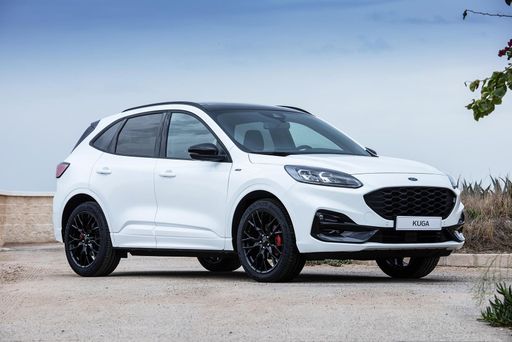
Ford Kuga
Ford Kuga
The Ford Kuga stands out in the realm of compact SUVs with its sleek design and dynamic performance capabilities. Its spacious interior is thoughtfully designed to provide comfort and practicality for both driver and passengers, making it an ideal choice for families and adventurers alike. Advanced technology and safety features further enhance the driving experience, ensuring a seamless blend of innovation and reliability on the road.
details @ kuga.fordpresskits.com
@ kuga.fordpresskits.com
 @ kuga.fordpresskits.com
@ kuga.fordpresskits.com
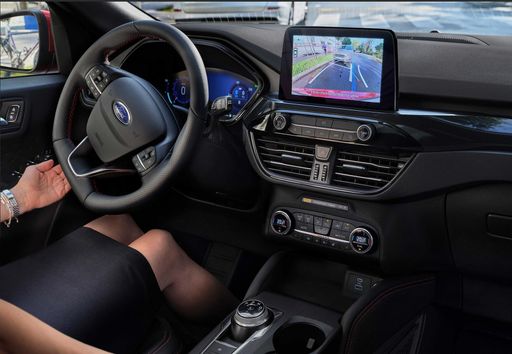 @ kuga.fordpresskits.com
@ kuga.fordpresskits.com
Dacia Bigster
The Bigster is poised to redefine the SUV segment with its bold design and spacious interior, catering to the needs of both families and adventure seekers alike. Emphasizing sustainability and practicality, this model reflects a modern approach to automotive engineering, making it a compelling choice for environmentally conscious drivers. With its striking presence on the road, the Bigster not only captures attention but also embodies a new era of versatile mobility.
details @ media.renault.at
@ media.renault.at
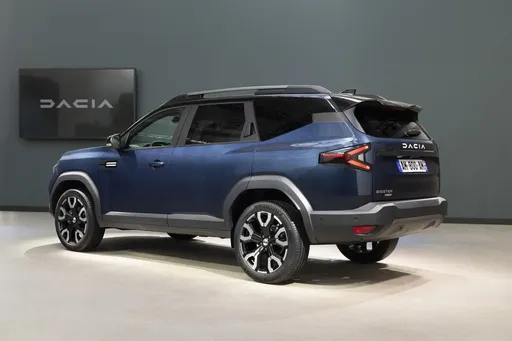 @ media.renault.at
@ media.renault.at
 @ media.renault.at
@ media.renault.at
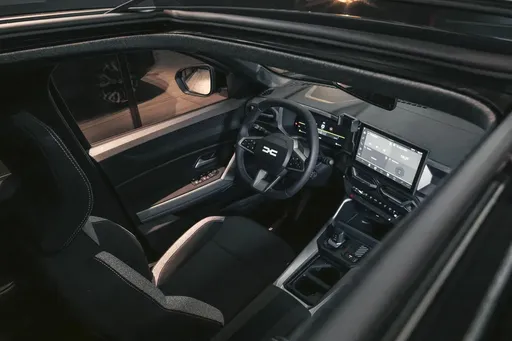 @ media.renault.at
@ media.renault.at
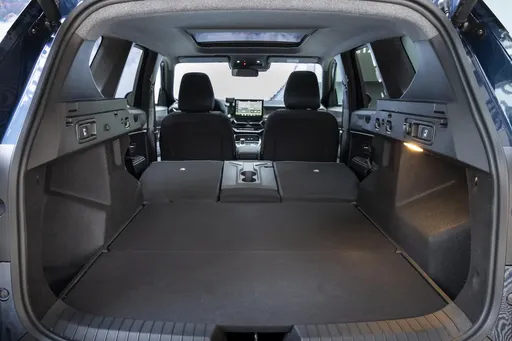 @ media.renault.at
@ media.renault.at

|

|
|
|
|
Costs and Consumption |
|
|---|---|
|
Price
34200 - 46300 £
|
Price
20600 - 26600 £
|
|
Consumption L/100km
2.8 - 6.8 L
|
Consumption L/100km
4.7 - 7.1 L
|
|
Consumption kWh/100km
-
|
Consumption kWh/100km
-
|
|
Electric Range
68 km
|
Electric Range
-
|
|
Battery Capacity
1.1 - 14.4 kWh
|
Battery Capacity
-
|
|
co2
55 - 154 g/km
|
co2
106 - 137 g/km
|
|
Fuel tank capacity
42 - 54 L
|
Fuel tank capacity
50 - 55 L
|
Dimensions and Body |
|
|---|---|
|
Body Type
SUV
|
Body Type
SUV
|
|
Seats
5
|
Seats
5
|
|
Doors
5
|
Doors
5
|
|
Curb weight
1526 - 1859 kg
|
Curb weight
1425 - 1547 kg
|
|
Trunk capacity
412 L
|
Trunk capacity
510 - 667 L
|
|
Length
4604 - 4645 mm
|
Length
4570 mm
|
|
Width
1882 mm
|
Width
1813 mm
|
|
Height
1673 - 1681 mm
|
Height
1705 mm
|
|
Max trunk capacity
1534 L
|
Max trunk capacity
1813 - 1937 L
|
|
Payload
541 - 550 kg
|
Payload
383 - 467 kg
|
Engine and Performance |
|
|---|---|
|
Engine Type
Petrol, Full Hybrid, Plugin Hybrid
|
Engine Type
Petrol MHEV, Full Hybrid, LPG
|
|
Transmission
Manuel, Automatic
|
Transmission
Manuel, Automatic
|
|
Transmission Detail
Manual Gearbox, CVT, Automatic Gearbox
|
Transmission Detail
Manual Gearbox, Automated Manual
|
|
Drive Type
Front-Wheel Drive, All-Wheel Drive
|
Drive Type
All-Wheel Drive, Front-Wheel Drive
|
|
Power HP
150 - 243 HP
|
Power HP
130 - 155 HP
|
|
Acceleration 0-100km/h
7.3 - 9.9 s
|
Acceleration 0-100km/h
9.7 - 11.2 s
|
|
Max Speed
195 - 200 km/h
|
Max Speed
180 km/h
|
|
Torque
240 Nm
|
Torque
230 Nm
|
|
Number of Cylinders
3 - 4
|
Number of Cylinders
3 - 4
|
|
Power kW
111 - 178 kW
|
Power kW
96 - 115 kW
|
|
Engine capacity
1496 - 2488 cm3
|
Engine capacity
1199 - 1799 cm3
|
General |
|
|---|---|
|
Model Year
2025
|
Model Year
2025
|
|
CO2 Efficiency Class
E, D, B
|
CO2 Efficiency Class
E, D, C
|
|
Brand
Ford
|
Brand
Dacia
|
What drivetrain options does the Ford Kuga have?
The Ford Kuga is available as Front-Wheel Drive or All-Wheel Drive.
The prices and data displayed are estimates based on German list prices and may vary by country. This information is not legally binding.
